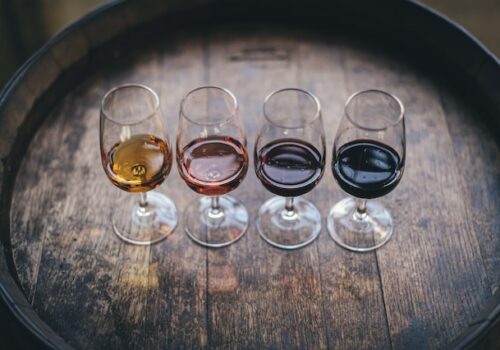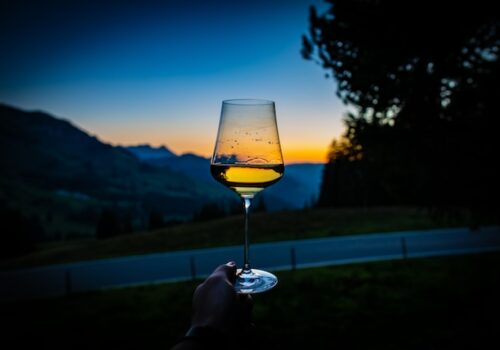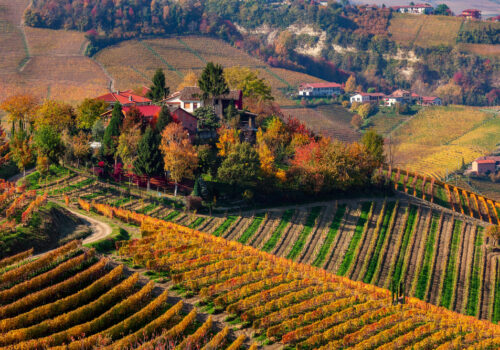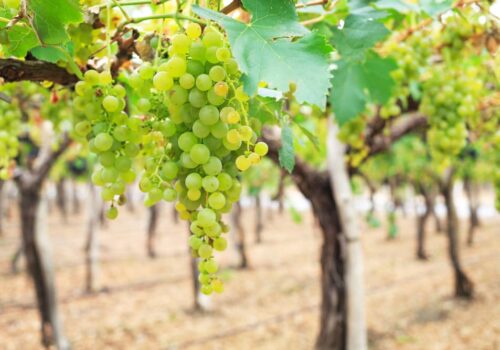Industrial wine production
These days, you rarely see cheerful peasants trampling grapes with bare feet in wooden vats. Rather, one has to imagine stainless steel, computers, and laboratory hygiene.
The first thing to do is to get the grape juice. This task is performed by a machine called a crusher, which splits the grape skins.
If it is a white wine, it is necessary to separate the fermented juice from the peels, because they give the wine undesirable color and saturate it with tannin. Without delay, the crushed mass of grapes is placed under the press to squeeze out all the liquid and then pumped into a container called a fermenting vat.
The greatest advance in winemaking in the 20th century was the ability to control fermentation temperatures, which allowed for cold fermentation. Most of today’s light white wines are made in huge chilled steel containers, but some top quality white wines are fermented in small oak barrels, giving the wine an oiliness and vanilla depth.
In making red wine, the juice and pulp are fermented together because the peel contains natural coloring agents, aromatic substances and tannin, which acts as a preservative. Fermentation in large stainless steel, concrete or wood vats takes place at a higher temperature than for white wine to extract the maximum amount of color and aromatic substances from the rind.
Sometimes the liquid is stirred or the juice is pumped from the bottom over the mash floating on top, observing the formation of a deep red hue. When the color and tannin content reaches optimum levels, the juice is poured into a new vat, and the remaining mass goes under the press to squeeze out the remaining liquid.
When making rosé wine, the separation of the grape must from the skins begins at an earlier stage, and then the process is repeated as in the making of white wine.
After fermentation. Fermentation ends when all the sugar in the wine is converted into alcohol, or when the alcohol content becomes high enough for the yeast to die. It is now possible to manipulate the wine by combining the contents of two or more fermenting vats. This means combining different grape varieties to produce a new flavor and aroma.
The wine must mature for several days to several years, depending on the flavor the winemakers want. When wine is stored in small oak barrels (barrique), it develops a deep, warm flavor. Because of the high cost of barrels, it is more economical to add oak chips or even oak flavoring to the vat of wine. This procedure is effective for cheap wines.
When matured, red wines improve through a natural process called malolactic fermentation. Certain bacteria convert acid from harsh malic acid to milder lactic acid. This process is undesirable for some white wines; the bacteria are then filtered out or killed.
Sparkling Wine Making. All the best sparkling wines are made according to the method developed in Champagne, France. First an ordinary wine is made, incredibly sour but with great sparkling potential. Then the wine is placed in strong bottles with a small amount of yeast and sugar to start a second fermentation. The bottles are sealed with strong corks. The carbon dioxide dissolves in the wine and waits for the day when it can be released as abundant foam and dainty chains of tiny bubbles.
The simplest and worst method of making sparkling wine is to pump the carbon dioxide through the young wine: large bubbles are produced, disappearing as soon as the bottle is opened.
Making a sweet wine. For a wine to be sweet, a noticeable amount of sugar must remain in it after fermentation. The simplest method is to stop the fermentation before all the sugar has turned into alcohol. This requires a centrifuge or filter. Rich, sweet wines-especially Sauternes from Bordeaux, France-are made from grapes under the influence of a fungus called noble mold. It is called noble mold because, instead of ruining grapes, it reduces water content and concentrates acidity and sugar content.
Making fortified wines. Sweet or other wines with an alcohol content of more than 15% are usually made by adding brandy or pure alcohol. The custom of fortifying wines arose as a result of the sailors of merchant ships needing wine that would not spoil during long sea voyages.
Take port wine, for example. 200 or 300 years ago, no one liked the rough red wines of the Doro Valley in Portugal. When brandy is added to a young wine, the fermentation process stops: the yeast can’t take it if the alcohol level rises too high. The wines become stronger and exquisitely sweet.
Sherry is made differently: here brandy is added after fermentation has ended, so the wine is dry, with a typical invigorating, almost sour taste. Sweet sherry is sweetened before bottling.




